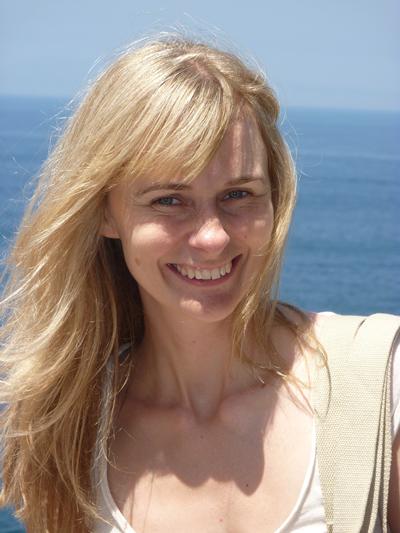Sara Perry PhD Archaeology

Hi, I'm Sara Perry and I studied PhD Archaeology within Humanities at the University of Southampton.
Southampton has a history of pushing the boundaries on the scope of the discipline, and my work sits within this vein.
Sara is from Canada and came to Southampton for a PhD in Archaeology.
What was your first degree in? Where did you study it?
I completed a BA and MA in Anthropology at the University of Victoria, Canada where I specialised in prehistoric archaeology and visual anthropology.
What made you decide to study archaeology at postgraduate level? Why did you choose to study at Southampton?
I moved to Southampton specifically to study for my PhD under the supervision of Professor Stephanie Moser. Her research into the significance of imagery for the discipline of archaeology is world-leading, completely unique, and a perfect match for my interests. There is arguably no other university that could have provided me with access to the people, ideas, and resources that Southampton has offered to me.
Tell us more about the areas of Archaeology that you are now specialising in.
My interests lie in how archaeologists present the past to both academic and non-academic audiences - for instance, in museums, books, journal articles, exhibitions, lectures, on television and on the web. I’m working to understand how these forms of presentation feed back into the research questions that we ask as archaeologists and the funding that we receive. Savvy use of different media has profound consequences for the discipline - both financially and intellectually - and archaeologists are only just starting to untangle the implications. A bit more information about my research priorities can be found on my website.
Are you enjoying your studies? What do you like most about your degree programme?
I’ve been very lucky in the sense that Archaeology at Southampton has been prepared to support new research agendas which do not fit within the stereotypical vision of the discipline. While I was trained as a field archaeologist in Canada, now my main interests are in emerging and other relatively new lines of enquiry, including visualisation in archaeology, heritage studies, and digital archaeological theory and practice. Southampton has a history of pushing the boundaries on the scope of the discipline, and my work sits within this vein.
The staff in Humanities at Southampton have been phenomenal - not just lecturers, but also administrators, teaching fellows, post-docs, IT specialists, finance staff, and other PhD students. I’ve had the opportunity to contribute to projects that span the disciplines, and have been incredibly impressed with the dedication and support of everyone from across the University. Archaeology in particular, stands out for its welcoming nature, as it works hard to integrate independent learning with camaraderie and group interaction.
What’s the best thing about living and studying in Southampton?
Southampton's accessibility to London is ideal. My studies have depended upon repeated trips to archives in London, Cambridge, Oxford, Liverpool and elsewhere, as well as access to the airport for fieldwork trips and ethnographic research, so Southampton has proven to be perfectly placed.
What has been your favourite moment so far?
Without a doubt, the best opportunity that has presented itself whilst I’ve been studying at Southampton has been the chance to assist Stephanie Moser and Graeme Earl with fieldwork at the world-renowned Neolithic site of Çatalhöyük. The site has been studied by archaeologists for over 50 years, and is currently being excavated under the direction of Professor Ian Hodder of Stanford University. Çatalhöyük has some of the most incredible early wall paintings and decorative reliefs of any archaeological site in the world, and has the infrastructure in place to allow us to experiment with new disciplinary theory and practice. We are currently redesigning Çatalhöyük’s Visitor’s Centre, producing new graphic outputs for both academic and non-academic audiences, and conducting ethnographic research with visitors, archaeologists and site staff.
What are you planning to do after graduating?
I have been incredibly fortunate in that the contacts I’ve made at Southampton and the projects in which I’ve been involved have led directly to my appointment as a Lecturer in Cultural Heritage Management at the University of York, working with the amazing John Schofield (himself a former Southampton alumnus).
Do you have any advice for people considering studying archaeology at postgraduate level at Southampton?
Take advantage of the many opportunities available to you as a student and scholar at Southampton that stretch beyond the scope of your immediate studies. Submit conference papers and journal articles, accept relevant teaching roles, contribute to comparable projects, participate in academic committee work, and connect with people both within and outside your discipline. Your degree is just a tiny part of the larger postgraduate experience: it is a stepping stone to greater things, and thus it’s important to keep in sight those other related possibilities.